#d1d1ce Color Information
In a RGB color space, hex #d1d1ce is composed of 82% red, 82% green and 80.8% blue. Whereas in a CMYK color space, it is composed of 0% cyan, 0% magenta, 1.4% yellow and 18% black. It has a hue angle of 60 degrees, a saturation of 3.2% and a lightness of 81.4%. #d1d1ce color hex could be obtained by blending #ffffff with #a3a39d. Closest websafe color is: #cccccc.
-
- R 82
- G 82
- B 81
-
- C 0
- M 0
- Y 1
- K 18
● #d1d1ce color description : Grayish yellow.
#d1d1ce Color Conversion
The hexadecimal color #d1d1ce has RGB values of R:209, G:209, B:206 and CMYK values of C:0, M:0, Y:0.01, K:0.18. Its decimal value is 13750734.
| Hex triplet | d1d1ce | #d1d1ce |
|---|---|---|
| RGB Decimal | 209, 209, 206 | rgb(209,209,206) |
| RGB Percent | 82, 82, 80.8 | rgb(82%,82%,80.8%) |
| CMYK | 0, 0, 1, 18 | |
| HSL | 60°, 3.2, 81.4 | hsl(60,3.2%,81.4%) |
| HSV (or HSB) | 60°, 1.4, 82 | |
| Web Safe | cccccc | #cccccc |
| CIE-LAB | 83.764, -0.542, 1.477 |
|---|---|
| XYZ | 60.234, 63.612, 67.494 |
| xyY | 0.315, 0.332, 63.612 |
| CIE-LCH | 83.764, 1.573, 110.145 |
| CIE-LUV | 83.764, 0.163, 2.319 |
| Hunter-Lab | 79.757, -4.771, 5.656 |
| Binary | 11010001, 11010001, 11001110 |
Color Schemes with #d1d1ce
Alternatives to #d1d1ce
Below, you can see some colors close to #d1d1ce. Having a set of related colors can be useful if you need an inspirational alternative to your original color choice.
#d1d1ce Preview
This text has a font color of #d1d1ce.
<span style="color:#d1d1ce;">Text here</span>This paragraph has a background color of #d1d1ce.
<p style="background-color:#d1d1ce;">Content here</p>This element has a border color of #d1d1ce.
<div style="border:1px solid #d1d1ce;">Content here</div>.text {color:#d1d1ce;}.background {background-color:#d1d1ce;}.border {border:1px solid #d1d1ce;}Shades and Tints of #d1d1ce
A shade is achieved by adding black to any pure hue, while a tint is created by mixing white to any pure color. In this example, #020201 is the darkest color, while #f7f7f6 is the lightest one.
-
#020201
#020201rgb(2,2,1) -
#0c0c0b
#0c0c0brgb(12,12,11) -
#161614
#161614rgb(22,22,20) -
#20201e
#20201ergb(32,32,30) -
#2a2a27
#2a2a27rgb(42,42,39) -
#343431
#343431rgb(52,52,49) -
#3e3e3a
#3e3e3argb(62,62,58) -
#484844
#484844rgb(72,72,68) -
#53534d
#53534drgb(83,83,77) -
#5d5d57
#5d5d57rgb(93,93,87) -
#676760
#676760rgb(103,103,96) -
#71716a
#71716argb(113,113,106) -
#7b7b73
#7b7b73rgb(123,123,115)
-
#85857d
#85857drgb(133,133,125) -
#8f8f87
#8f8f87rgb(143,143,135) -
#989891
#989891rgb(152,152,145) -
#a2a29b
#a2a29brgb(162,162,155) -
#ababa6
#ababa6rgb(171,171,166) -
#b5b5b0
#b5b5b0rgb(181,181,176) -
#bebeba
#bebebargb(190,190,186) -
#c8c8c4
#c8c8c4rgb(200,200,196) -
#d1d1ce
#d1d1cergb(209,209,206) -
#dadad8
#dadad8rgb(218,218,216) -
#e4e4e2
#e4e4e2rgb(228,228,226) -
#ededec
#ededecrgb(237,237,236) -
#f7f7f6
#f7f7f6rgb(247,247,246)
Tones of #d1d1ce
A tone is produced by adding gray to any pure hue. In this case, #d1d1ce is the less saturated color, while #fdfda2 is the most saturated one.
-
#d1d1ce
#d1d1cergb(209,209,206) -
#d5d5ca
#d5d5cargb(213,213,202) -
#d8d8c7
#d8d8c7rgb(216,216,199) -
#dcdcc3
#dcdcc3rgb(220,220,195) -
#e0e0bf
#e0e0bfrgb(224,224,191) -
#e3e3bc
#e3e3bcrgb(227,227,188) -
#e7e7b8
#e7e7b8rgb(231,231,184) -
#ebebb4
#ebebb4rgb(235,235,180) -
#eeeeb1
#eeeeb1rgb(238,238,177) -
#f2f2ad
#f2f2adrgb(242,242,173) -
#f6f6a9
#f6f6a9rgb(246,246,169) -
#f9f9a6
#f9f9a6rgb(249,249,166) -
#fdfda2
#fdfda2rgb(253,253,162)
Color Blindness Simulator
Below, you can see how #d1d1ce is perceived by people affected by a color vision deficiency. This can be useful if you need to ensure your color combinations are accessible to color-blind users.
